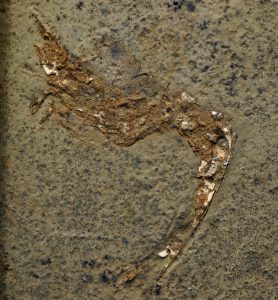
About 100 million years ago, when dinosaurs roamed the land, three little shrimp went house hunting. Perhaps seeking shelter from predators, far from protective coral reefs, they chose a giant clam—not the largest on the block, but cozy at about 10 inches wide.
They settled in only to be quickly flooded with silt and mud. Their intended shelter suddenly became their tomb. And there they sat until 2016, when an Australian farmer came along and found them. The fossilized clam containing the three shrimp, each about 1.2 inches long, is now housed in Australia’s Kronosaurus Korner museum.
Recently described in the journal Palaeogeography, Palaeoclimatology, Palaeoecology, the fossil represents the oldest example of a shrimp using another creature (or creature’s home) for shelter—something living shrimp still do today. This behavior, known as inquilinism, is seen in many animals, both on land and in the oceans.
Read more about this research on National Geographic’s website and Research & Collections website.